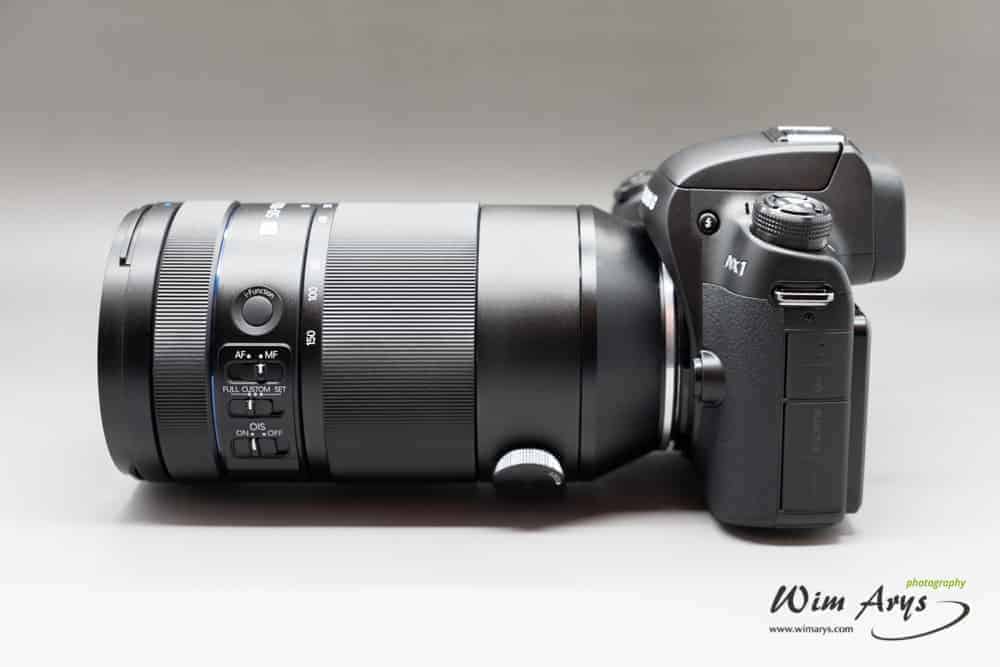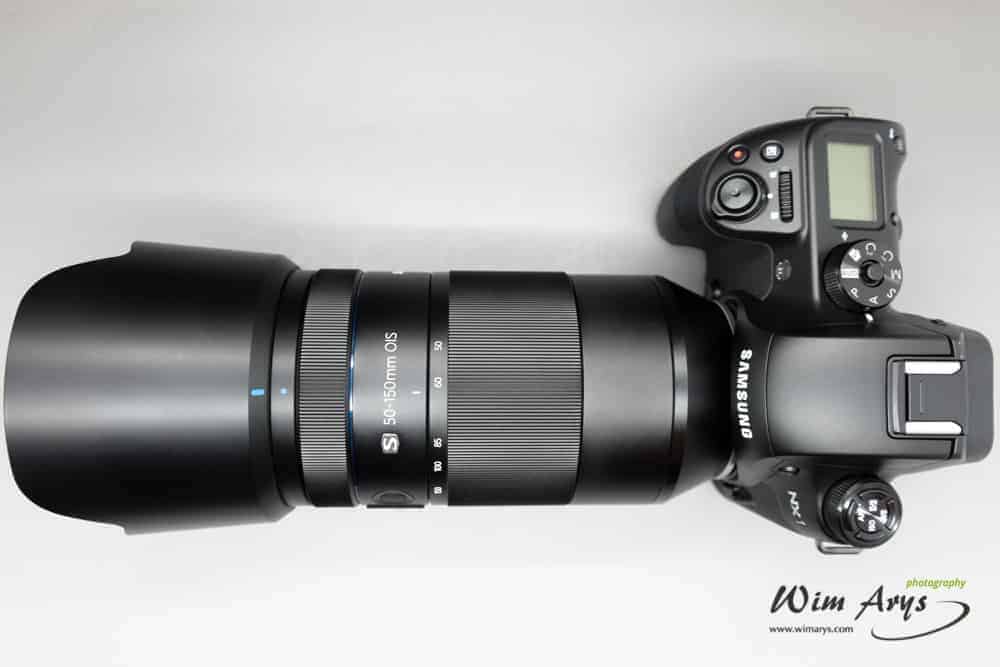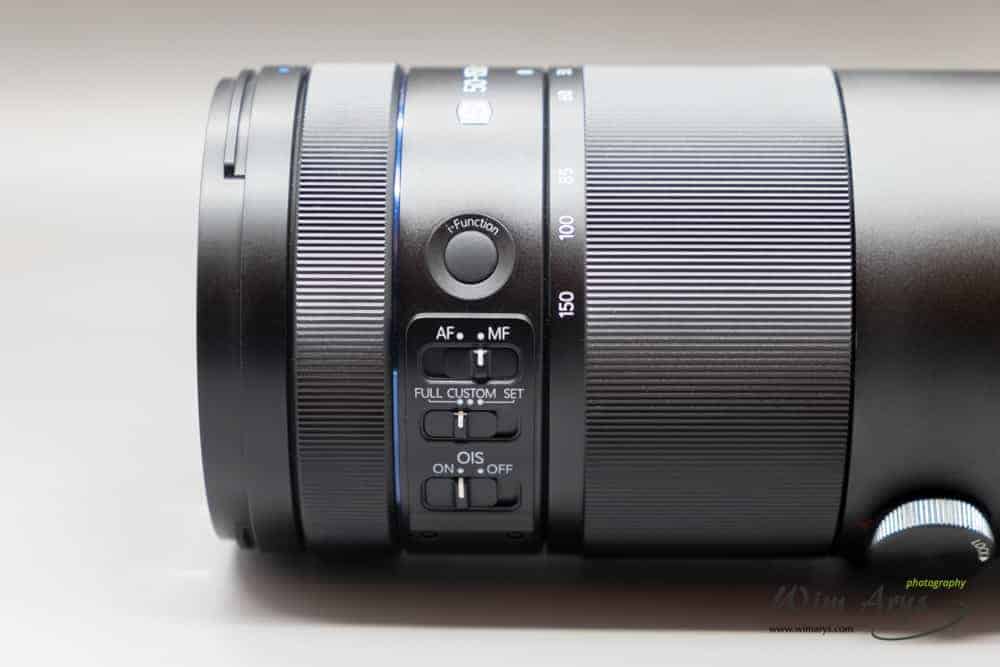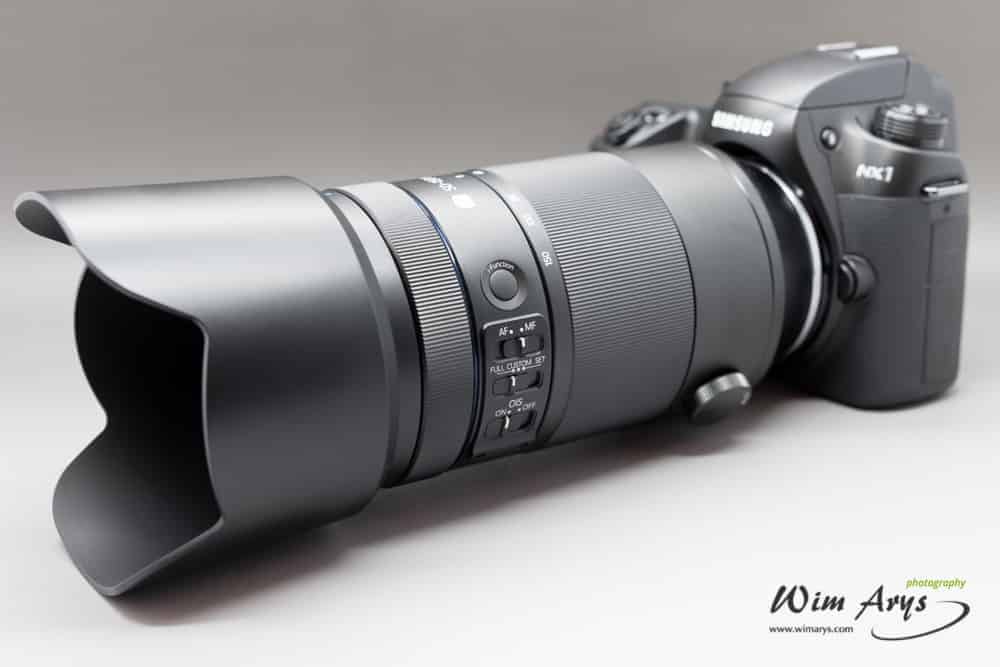Samsung NX 50-150mm f2.8 S ED OIS premium zoom review
Introduction
The Samsung NX 50-150mm f/2.8 is the latest addition to their high quality Premium ‘S’ lens line-up for the NX system. It features 20 elements in 13 groups, including four ED (extra-low dispersion) and one XHR (eXtreme High Refractive) elements for excellent clarity, detail and sharpness. The XHR element helps to make possible a more compact and lightweight lens, providing the same benefits as a greater number of standard optical glass elements.
The Samsung NX 50-150 mm Premium S Lens features 4-axis control stabilisation with a 6-axis sensor for detecting camera shake that enables the OIS system to make precision corrections necessary for sharper pictures at low shutter speeds. This advanced stabilisation gives an advantage of around 4.5 stops, allowing you to capture sharper images and higher quality video in low light and telephoto shots.
This tele zoom lens has a customizable focus limiter that can be adjusted to a user definable range, down to a minimum focus distance. The metal construction of the lens provides high quality look and excellent durability. To maximise ease of operation, controls for focus, zoom and OIS are all located in a single “function zone” on the side of the lens. It is also dust- and splash resistant.
Performance
Autofocus with the NX1
Distortion, Chromatic aberration and Colour rendition
An issue all Samsung ‘S’ lenses seem to have is that, despite the addition of 4 ED elements, chromatic aberration (colour fringing) is still clearly visible throughout the range at all apertures. This is easily fixed in-camera when shooting Jpeg or in Lightroom for RAW, although Lightroom currently does not remove this automatically.
Distortion is very well under control at all focal lengths; you’d be hard pressed to notice any.
Colour rendition on the Samsung NX1 is a little bit on the cool side, so it is advisable to manually set white balance in camera for your scenery, or change this afterwards in Lightroom.
Samsung NX 50-150mm F2.8 S sharpness and vignetting
5omm
center performance
The image centre is a bit soft at 2.8, but clears up nicely at at f/4. It remains sharp to f11, beyond that diffraction starts affecting sharpness.
- 50 mm f /2,8 center
- 50 mm f/4 center
- 50 mm f /5,6 center
- 50 mm f /8 center
- 50 mm f /11 center
- 50 mm f /14 center
- 50 mm f /18 center
- 50 mm f /22 center
corner performance
There is some slight vignetting visible at f/2.8, but disappears gradually by f/5.6. It’s a bit softer than the centre at f/2.8, and there is a gradual increase in sharpness until f5.6, stays sharp util f/11 and beyond f13 there is a clear loss in sharpness due to diffraction.
- 50 mm f/2,8 corner
- 50 mm f/4 corner
- 50 mm f/5,6 corner
- 50 mm f/8 corner
- 50 mm f/11 corner
- 50 mm f/14 corner
- 50 mm f/18 corner
- 50 mm f/22 corner
60mm
center performance
Like at 50mm, this lens sharpens up at f/4, but drop in sharpness around f5.6, regains sharpness at f/8 until f/11. Again, beyond f11 you’ll see the effects of diffraction.
- 60 mm f/2,8 center
- 60 mm f/4 center
- 60 mm f/5,6 center
- 60 mm f/8 center
- 60 mm f/11 center
- 60 mm f/16 center
- 60 mm f/22 center
corner performance
There is some slight vignetting at f/2.8 which gradually disappears by f/5,6. Corners are sharpest at f/8.
- 60 mm f/2,8 corner
- 60 mm f/4 corner
- 60 mm f/5,6 corner
- 60 mm f/8 corner
- 60 mm f/11 corner
- 60 mm f/16 corner
- 60 mm f/22 corner
85mm
center performance
Although already quite useable at f/2.8, at 85mm, this lens is sharpest at f8.Diffraction seems to creep in around f/16.
- 85 mm f/2,8 center
- 85 mm f/4 center
- 85 mm f/5,6 center
- 85 mm f/8 center
- 85 mm f/11 center
- 85 mm f/16 center
- 85 mm f/22 center
corner performance
Vignetting disappears by f/4 at 85mm. A similar story to the centre performance, with a sharpness boost at f/4, reaching optimal sharpness at f/8.
- 85 mm f/2,8 corner
- 85 mm f/4 corner
- 85 mm f/5,6 corner
- 85 mm f/8 corner
- 85 mm f/11 corner
- 85 mm f/16 corner
- 85 mm f/22 corner
100mm
center performance
F/2.8 seems very soft at 100mm, but gains maximum sharpness at f/4 sharpest. Diffraction seems to set in at F/16.
- 100 mm f/2,8 center
- 100 mm f/4 center
- 100 mm f/5,6 center
- 100 mm f/8 center
- 100 mm f/11 center
- 100 mm f/16 center
- 100 mm f/22 center
corner performance
Vignetting disappears by f/4 vignetting. At f/2.8 the corners are also soft, improving upto f/8.
- 100 mm f/2.8 corner
- 100 mm f/4 corner
- 100 mm f/5,6 corner
- 100 mm f/8 corner
- 100 mm f/11 corner
- 100 mm f/16 corner
- 100 mm f/22 corner
150mm
center performance
At 150mm, f/2.8 is soft, gaining maximum sharpness at f/8. Diffraction sets in at f/13.
- 150 mm f/2,8 center
- 150 mm f/4 center
- 150 mm f/5,6 center
- 150 mm f/8 center
- 150 mm f/11 center
- 150 mm f/16 center
- 150 mm f/22 center
corner performance
Vignetting is a bit stronger at 150mm, only totally disappearing by f/8. In line with centre performance, f/8 is sharpest.
- 150 mm f/2,8 corner
- 150 mm f/4 corner
- 150 mm f/5,6 corner
- 150 mm f/8 corner
- 150 mm f/11 corner
- 150 mm f/16 corner
- 150 mm f/22 corner
Conclusion
Since the Samsung NX 50-150mm F2.8 S is the only tele-zoom currently available, you don’t really have any choice if you’re in the market for one. That being said, samsung did a good job at designing a premium lens from scratch. There is almost no distortion visible throughout the range in this relatively light tele-zoom, and it pairs well with the 28MP APS-C sensor in the NX1. It does have some minor issues like clearly visible chromatic aberration and a slight decrease in sharpness at the far end (from 85mm onwards), but this is definitely a very useable zoom lens. The image stabilisation work well in order to keep blur to a minimum in good light, and I’m guessing we’ll have to wait for the next firmware update for an increase in performance in low light. All in all I think it’s a worthy addition to the NX range, although autofocus and tracking will have to be improved in order for it to be really useful for sports and action photography.












Awesome. I really had no idea re: the finer detail so of this lens, such as the XHR glass, Telezoom, or the type of advanced stabilization it used. Very interesting. Thanks for that.
Has it worked better with time with firmware updates on the NX500 or NX1? Tony Northtrup says the NX1 is his favorite sports cam. Certainly a medium-long range zoom would be part of that.
Hi Richard, I never got to try this lens with the latest firmware, but reports indicate that it does perform better.
Now that Samsung is out of the camera business, I am not sure if this is still a good system to invest in though.